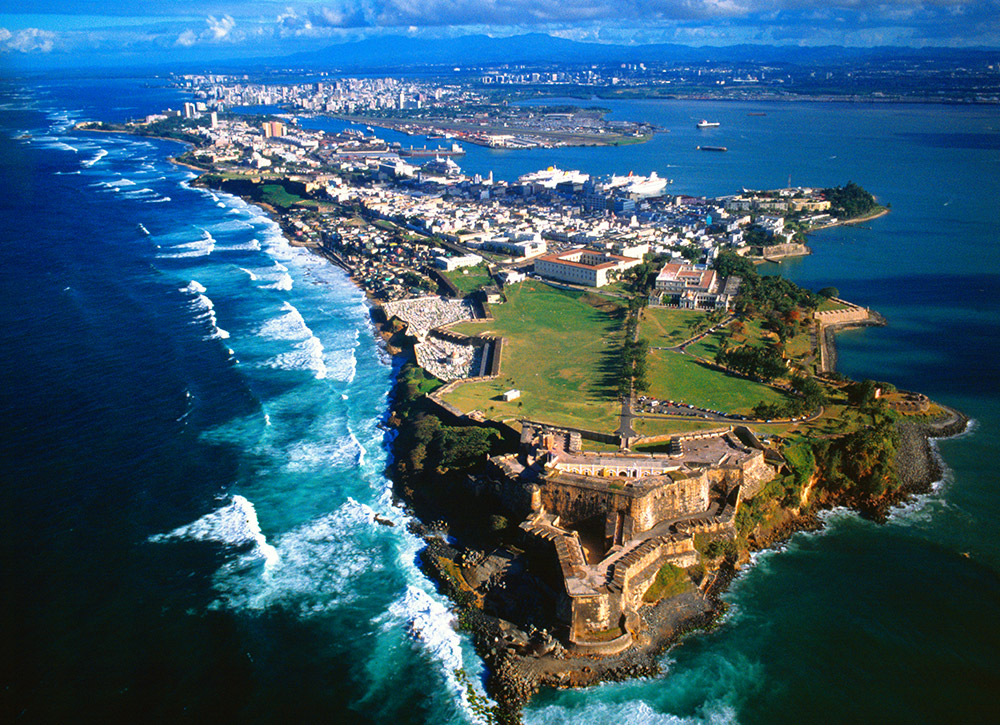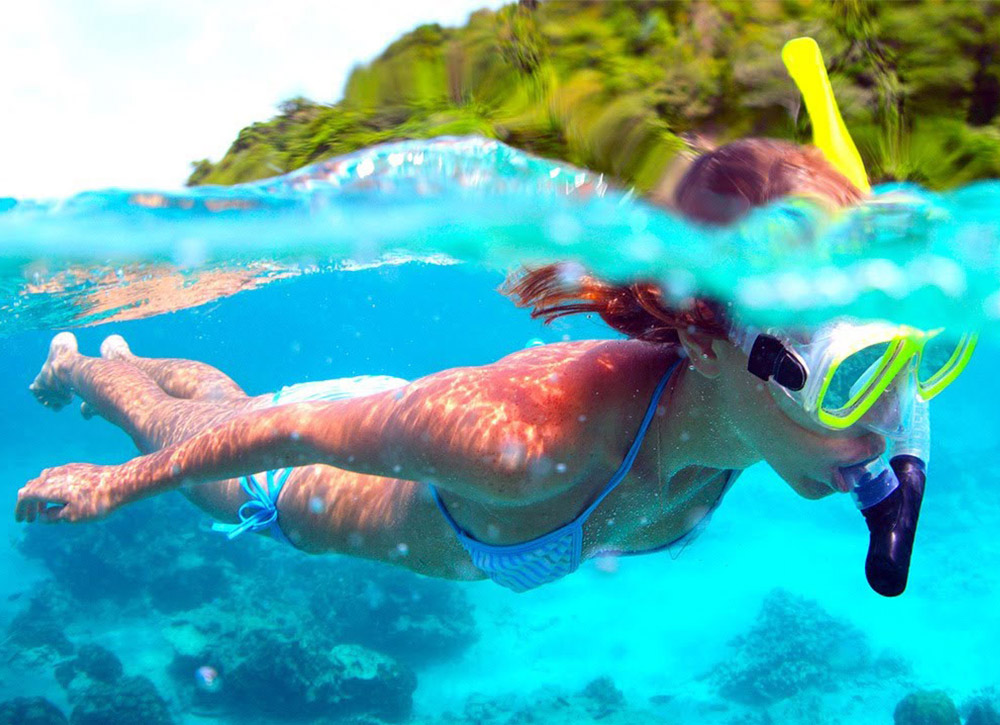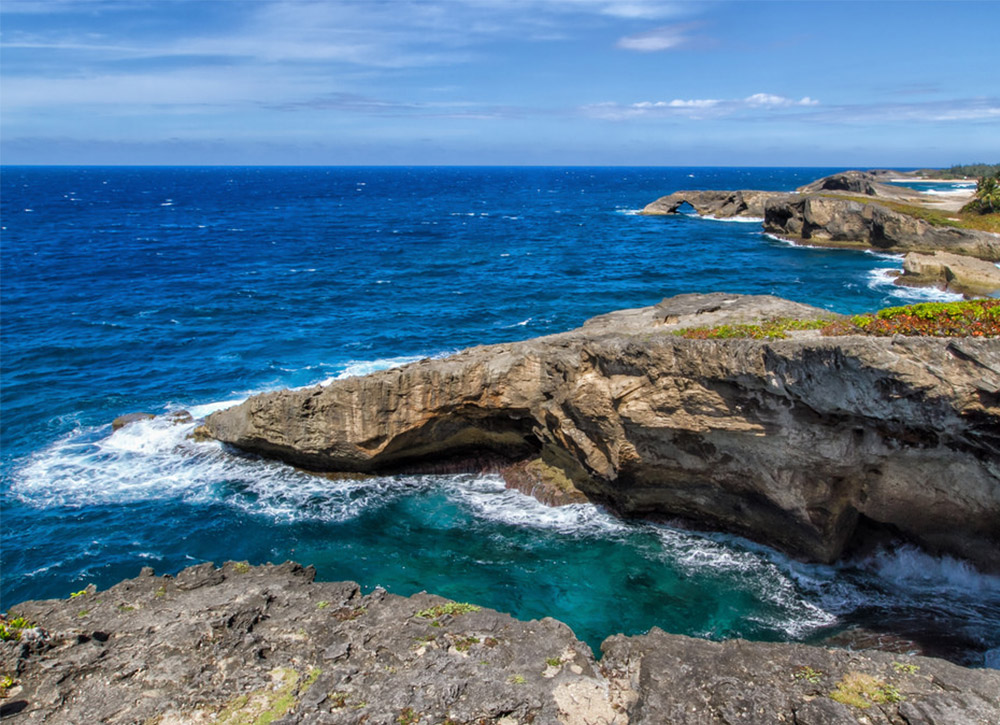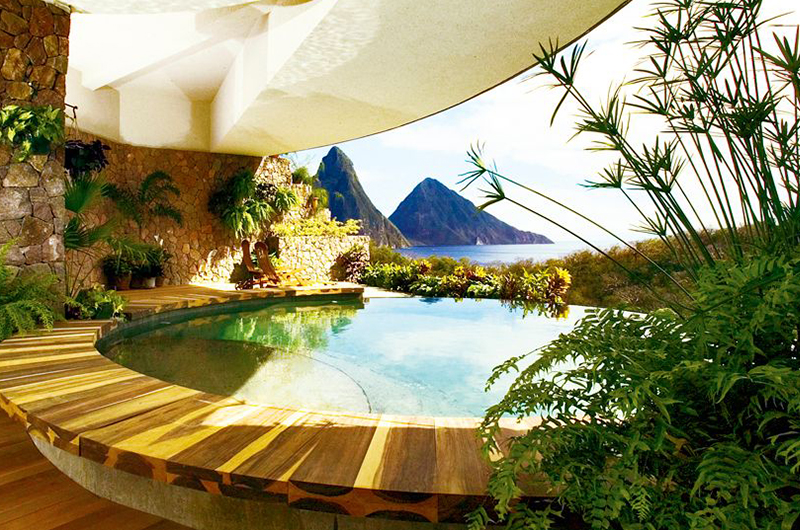Guide to Puerto Rico
Puerto Rico inspires Caribbean daydreams for good reason: it can satisfy both the lethargic beach bum and the budding big-wave surfer – all in a long weekend. Its coral reefs host a riot of fantastical fish and the shores shimmer like crushed pearls. On some beaches you'll have plenty of company. In other places like Vieques or Cabo Rojo you might have some of the world's best stretches of sand entirely to yourself. If the sands that rim the island tempt you to stay, you can opt for sizeable resorts or independent guesthouses for watching those seaside sunsets from your room.
The island's culture is of the visceral kind. You'll need to search for it beyond the condo towers and congested roads, and sometimes it seems Puerto Rico does not wish to show outsiders its cultural magnitude. Then, suddenly, you'll smell it in the smoke arising from lechoneras (eateries specializing in suckling pig), or hear it in the intoxicating patters of salsa beats. You'll glimpse it as sunlight sparkles across coffee plantations, or in museums celebrating everything from failed revolution to classical European painting. Puerto Rican traditions have been shaped by generations of cultural synthesis, celebration and setback, and it emerges today as vivid and indomitable.
Puerto Rico's present appears laid-back but its past brims with cannon fire and colonization, repression and revolt. Legend abounds: from San Juan's fortresses, scoured by siege, to the crumbling South Coast sugar refineries once powering the island's economy. European settlers built pretty plazas in harbor cities while political revolutionaries schemed rebellion in mountain villages. History enthusiasts can wander precolonial Taíno ruins or coffee haciendas. Even if your interest is scant, it's hard not to get immersed in Puerto Rico's tempestuous story in Old San Juan, where enticing echoes of bygone times – of colonists and swashbucklers and smugglers – reverberate still.
Climate and Geography
Puerto Rico, officially Commonwealth of Puerto Rico, Spanish Estado Libre Asociado de Puerto Rico, self-governing island commonwealth of the West Indies, associated with the United States. The easternmost island of the Greater Antilles chain, it lies approximately 50 miles (80 km) east of the Dominican Republic, 40 miles (65 km) west of the Virgin Islands, and 1,000 miles (1,600 km) southeast of the U.S. state of Florida. It is situated in the northeastern Caribbean Sea, its northern shore facing the Atlantic Ocean. Two small islands off the east coast, Vieques and Culebra, are administratively parts of Puerto Rico, as is Mona Island to the west. Compared with its Greater Antillean neighbours, Puerto Rico is one-fifth as large as the Dominican Republic, one-third the size of Haiti, and slightly smaller than Jamaica. It is roughly rectangular in shape, extending up to 111 miles (179 km) from east to west and 39 miles (63 km) from north to south. The capital is San Juan.
Puerto Rico is largely composed of mountainous and hilly terrain, with nearly one-fourth of the island covered by steep slopes. The mountains are the easternmost extension of a tightly folded and faulted ridge that extends from the Central American mainland across the northern Caribbean to the Lesser Antilles. Although Puerto Rican relief is relatively low by continental standards, the island sits less than 100 miles (160 km) south of a precipitous depression in Earth’s crust: an extensive submarine feature of the Atlantic known as the Puerto Rico Trench, which descends to more than 5 miles (8 km) below sea level—the Atlantic’s deepest point—at a site northeast of the Dominican Republic. Powerful tectonic forces that over millions of years have created these features still occasionally cause earthquakes in Puerto Rico.
The island’s highest mountain range, the Cordillera Central, trends east-west and exceeds 3,000 feet (900 metres) in many areas; its slopes are somewhat gentle in the north but rise sharply from the south coast to the loftier peaks, topped at about 4,390 feet (1,338 metres) by Cerro de Punta, the highest point on the island. Near the island’s eastern tip, the partly isolated Sierra de Luquillo rises to 3,494 feet (1,065 metres) at El Yunque Peak.
The climate of Puerto Rico in the Köppen climate classification is tropical rainforest. Temperatures are warm to hot year round, averaging near 85 °F (29 °C) in lower elevations and 70 °F (21 °C) in the mountains. Easterly trade winds pass across the island year round. Puerto Rico has a rainy season which stretches from April into November. The mountains of the Cordillera Central are the main cause of the variations in the temperature and rainfall that occur over very short distances. The mountains can also cause wide variation in local wind speed and direction due to their sheltering and channeling effects adding to the climatic variation. The island has an average temperature of 82.4 °F (28 °C) throughout the year, with an average minimum temperature of 66.9 °F (19 °C) and maximum of 85.4 °F (30 °C). Daily temperature changes seasonally are quite small in the lowlands and coastal areas. The temperature in the south is usually a few degrees higher than the north and temperatures in the central interior mountains are always cooler than those on the rest of the island.
Between the dry and wet season, there is a temperature change of around 6 °F (3.3 °C). This is mainly due to the warm waters of the tropical Atlantic Ocean, which significantly modify cooler air moving in from the north and northwest. Coastal waters temperatures around the years are about 75 °F (24 °C) in February to 85 °F (29 °C) in August. The highest temperature ever recorded was 99 °F (37 °C) at Arecibo,[179] while the lowest temperature ever recorded was 40 °F (4 °C) in the mountains at Adjuntas, Aibonito, and Corozal. The average yearly precipitation is 1,687 mm (66 in).
things to do in puerto rico
Relax and unwind on a leisurely catamaran sail to Icacos, a deserted island paradise off the coast of San Juan, with miles of white sand beaches and crystal clear water! Here you can search the island, collect shells, sunbathe, wade or swim offshore and view the underwater wonders of a living coral reef. Your picnic lunch and complimentary pina colada is served on board by the crew - what more could you ask for! Spread your wings and take a leisurely sail to a deserted island from San Juan. Cruising aboard the Barefoot IV Catamaran, this trip promises to be the highlight of your San Juan vacation!The tour takes you on a relaxing sail by catamaran to the uninhabited island of Icacos. Spend the morning exploring the island, collecting shells or swimming offshore in the crystal-clear Caribbean Sea. If you're a novice, you can receive professional instruction in the art of snorkeling. After you've worked up an appetite, enjoy a scrumptious picnic lunch freshly prepared onboard by the crew, accompanied by pina coladas and rum punch. After lunch, you'll anchor over a breathtaking coral reef, home to colorful tropical fish and underwater wonders. Then, after a full day at sea, it's time to hoist the sail for the return trip to San Juan, completing a truly different day in paradise!
Sit back and relax on this leisurely half-day trip to the El Yunque rainforest. You'll discover an amazing world of nature trails, waterfalls, scenic views and the sub-tropical rainforest habitat of Puerto Rico's endangered wildlife. This half-day tour takes you to a place held sacred by the Puerto Rican locals. According to ancient Indian legend, the good spirit Yuquiyu reigned at El Yunque on his mighty mountain-top throne, protecting Puerto Rico and its people. On this fascinating tour, you'll pass typical native towns before ascending through rapidly changing vistas of amazing vegetation to reach El Yunque. The rainforest is home to more than 240 species of plants and wildlife, waterfalls, streams and hiking trails leading to enticing locations. You'll see tree orchids, giant ferns, wild flowers, tropical hardwoods and spectacular waterfalls, and see panoramic views of the entire north-east coast. The tour stops for vistas of the most beautiful sights on this tour, so don't forget to bring your camera!
Discover the beauty of Old San Juan with writer David Rodríguez, author of The Rise and Fall of the Great Barbate. Tour Old San Juan's most important historic sites, learn about Puerto Rican culture, and experience the places and activities that authentically represent the stories and people of the past and present of Puerto Rico. Enjoy a comprehensive walking tour of San Juan led by writer David Rodríguez. You will visit some of San Juan's most famous sights and learn stories and facts that will bring these locations alive. On this walking tour you will experience the beauty of the city while learning about its history. This comprehensive city tour will allow you to discover San Juan in a small group for personalized attention! You will visit the following sights on your tour: Christopher Columbus' square and admire Puerto Rico's Old Casino Fort San Cristobal exterior view La Princesa Walkway and surrounding areas Plaza de Armas City Wall A Front View of La Fortaleza Christ Chapel and La Rogativa San Juan Cathedral and Ponce de León Tomb San Juan Gate.





















